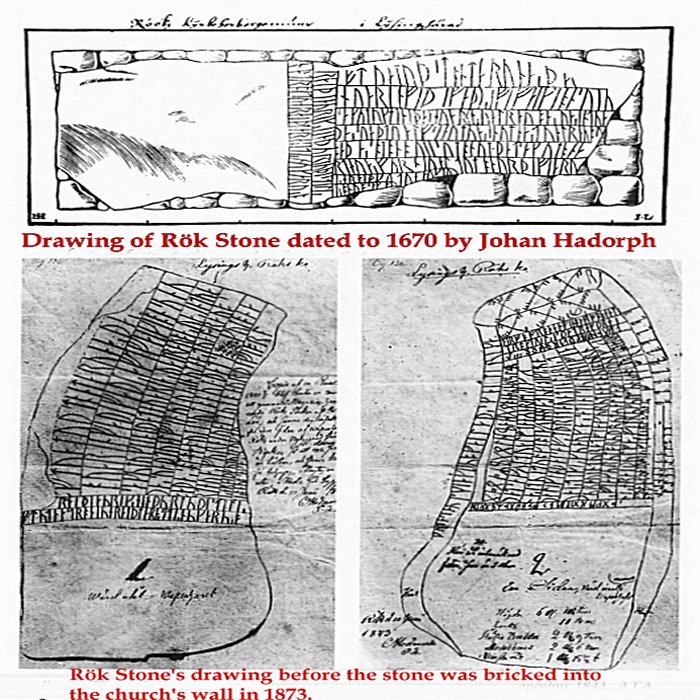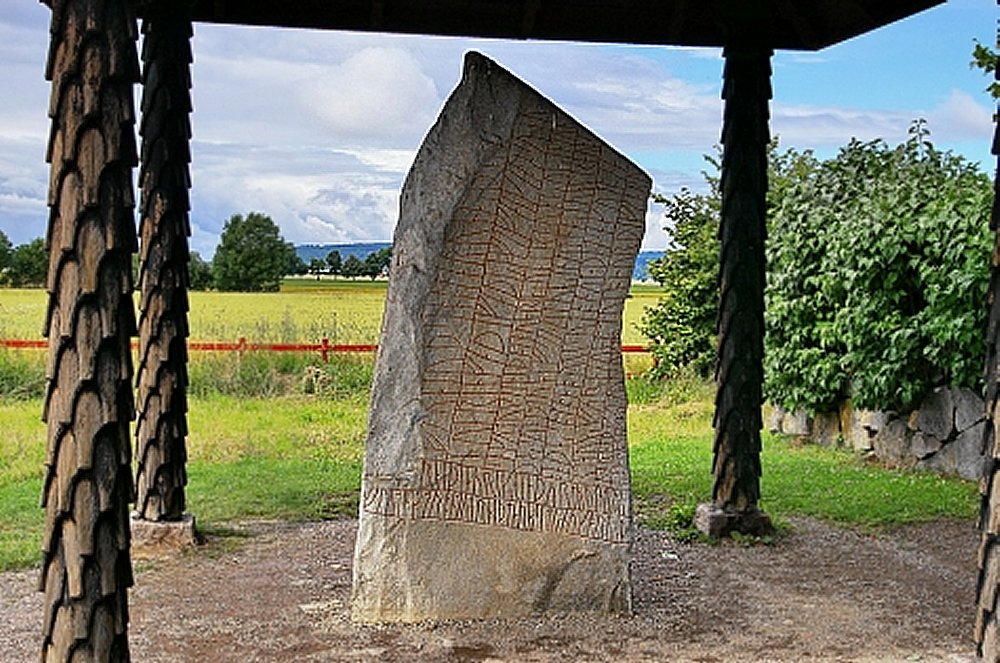Rök Stone: Longest Runic Inscription Ever Discovered
A. Sutherland - AncientPages.com - Rök Stone (in Swedish, Rökstenen') is the 9th-century memorial granite block covered with the longest runic inscription ever discovered. The 4-ton stone is located between two small villages (Väderstad och Ödeshög) in Östergötland County, Sweden.
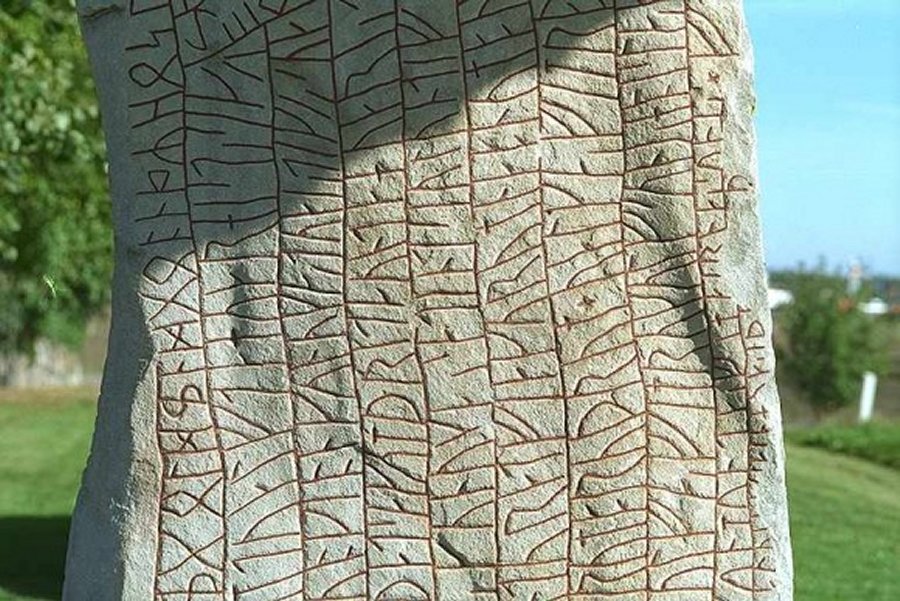 The text is full of obscure, difficult to understand, allusions. This enigmatic and fascinating inscription have attracted many researchers who created fanciful interpretations. Photo: Bengt A. Lundberg/KMB
The text is full of obscure, difficult to understand, allusions. This enigmatic and fascinating inscription have attracted many researchers who created fanciful interpretations. Photo: Bengt A. Lundberg/KMB
Rök Stone is not only a monumental memorial but also an ancient literary work of great significance. As many as 725 runes of a Swedish-Norwegian runic alphabet of 16 characters bear readable (sometimes difficult to interpret ) text containing verses of epic nature, allusions to heroic myths, hero songs, legends, and secret formulas, probably a curse.
Also carved on the stone are nine lines in the older runic alphabet (futhark). Varin (Varinn), the rune carver, also used cipher for magical purposes.
A complete stanza in the middle of the inscription is believed to concern Theodoric the Great (454-526 AD), king of the Ostrogoths (from 471). This king invaded Italy in 488 and completed the conquest of virtually the entire peninsula along with Sicily by 493.
Theodoric became king of Italy (493-526) and established his capital at Ravenna in northeastern Italy. Varin wrote the text in the 800s to tribute his dead son, Vämod (Vaemod).
This stone is one of the fascinating rune stones. Of all the runes carved in the 800s, only a few are preserved, and Rök Stone is the most notable.
Rök Stone's inscription is Sweden's most remarkable text from ancient times. It is a unique memorial to a young man. The text is full of obscure, difficult-to-understand allusions. An enigmatic and fascinating inscription has attracted many researchers who created fanciful interpretations.
Sophus Bugge (1833 - 1907), a Norwegian philologist and linguist who in 1878 made the first interpretation of the stone, was convinced that the text must be about the deceased Vaemod.
A completely different interpretation was proposed later by the Swedish literary historian Henrik Schück, who believed the text was a text enriched with some obscure myths.
Rök Stone has an ancient message, perhaps several messages but most probably it cannot be deciphered. The myths and legends mentioned in the text do not hang together, and since they are long since forgotten, we have no ability to understand the deeper meaning of the text. Photo: www.avrosys.nu
In 1920, a very suggestive and extended, widely accepted interpretation gave Otto von Friesen, the Swedish linguist and runologist, who saw in the text an intense appeal to the young dynasty to avenge Vaemod, who had fallen in battle.
Many other interpretations have also been proposed, involving revenge motifs and mysticism. One belongs to the Norwegian Ottar Grønvik, who suggested that the mysterious text is an extraordinary act of worship.
Rök Stone has an ancient message, perhaps several, but cannot be deciphered. The myths and legends mentioned in the text do not hang together, and since they are long forgotten, we cannot understand the deeper meaning of the text.
Many researchers believe that only contemporary people with Varinn who shared his culture could understand his text.
As many as 725 runes – being of a Swedish–Norwegian runic alphabet of 16 characters - bear readable (sometimes difficult to interpret) text containing verses of epic character, allusions to heroic myths, hero songs, legends and secret formulas, probably a curse. Photo: visitostergotland.se
The text reads:
"In memory of Vaemod stand these runes…"
"And Varin wrote them, the father of the dead son. I say the people of memory, which the two contrary changes were, which twelve times were taken as combat changing from man to man. I say that the second, who nine generations ago lost his life of reidgoterna and died in them as a result of its debt."
"Then there was Tjodrik the Bold, sjökrigarnas chieftain of Reid Mediterranean shore. Now he sits armed on his Gothic horse, shield over his shoulder, the foremost of Märingar".
"I say that the twelfth was Gunn's horse (wolf) sees food on the battlefield, where twenty kings lie. I say that the thirteenth, to which twenty kings sat on Zealand for four winters, with four names, sons of four brothers. five (named) Valke, Rådulvs sons, five Reidulv, Rugilvs sons, five Haisl, hords sons, five Gunn Mund, Bjorn's sons.
Now, I say memories completely. Someone ... (the stone is damaged here, reading and interpretation uncertain ) I say the people of memory, who Ingvald descendants who became gäldad by his wife's sacrifice. I say a people's memory, to which a fighter descendant born. Vilen it. He could crush a giant. Vilen it. I say a people memory: Tor. Sibbe from we graduated ninety years old (a son)."
Written by – A. Sutherland - AncientPages.com Senior Staff Writer
Updated on January 21, 2024
Copyright © AncientPages.com All rights reserved. This material may not be published, broadcast, rewritten or redistributed in whole or part without the express written permission of AncientPages.com
Expand for referencesReferences:
Forskning och Framsteg
More From Ancient Pages
-
 Melusine: Charming Water Fairy In European Legend About Taboo And Broken Promise
Featured Stories | Jan 2, 2019
Melusine: Charming Water Fairy In European Legend About Taboo And Broken Promise
Featured Stories | Jan 2, 2019 -
 Chankillo: A 2300-Year-Old Solar Observatory in Peru
Civilizations | Sep 2, 2015
Chankillo: A 2300-Year-Old Solar Observatory in Peru
Civilizations | Sep 2, 2015 -
 Statue Of Unknown Mythical Beast With Four Wings Discovered
Archaeology | Sep 1, 2022
Statue Of Unknown Mythical Beast With Four Wings Discovered
Archaeology | Sep 1, 2022 -
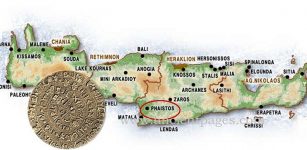 Is The Mystery Of Controversial Phaistos Disk Solved?
Archaeology | Dec 17, 2015
Is The Mystery Of Controversial Phaistos Disk Solved?
Archaeology | Dec 17, 2015 -
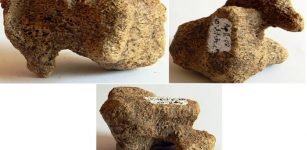 12,000 Years Ago Siberian People Possessed Technique To Soften Ivory And Create Toys Or Art Items
Ancient Technology | Jan 6, 2021
12,000 Years Ago Siberian People Possessed Technique To Soften Ivory And Create Toys Or Art Items
Ancient Technology | Jan 6, 2021 -
 Stunning Well-Preserved Larger Than Life Statue Of Hercules Discovered In Philippi, Greece
Archaeology | Sep 24, 2022
Stunning Well-Preserved Larger Than Life Statue Of Hercules Discovered In Philippi, Greece
Archaeology | Sep 24, 2022 -
 Dismantled Ancient Stone Circle In West Wales Was Used To Rebuilt As Stonehenge
Archaeology | Feb 13, 2021
Dismantled Ancient Stone Circle In West Wales Was Used To Rebuilt As Stonehenge
Archaeology | Feb 13, 2021 -
 Ambition, Greed And Death: The Roman Roots Of ‘Game Of Thrones’
Featured Stories | Jul 2, 2019
Ambition, Greed And Death: The Roman Roots Of ‘Game Of Thrones’
Featured Stories | Jul 2, 2019 -
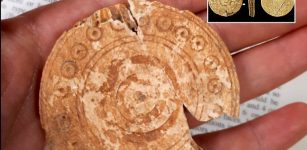 A Large ‘Tableman’ Sheds Some Light On People’s Fun And Games In Medieval Bedfordshire
Archaeology | Jun 19, 2023
A Large ‘Tableman’ Sheds Some Light On People’s Fun And Games In Medieval Bedfordshire
Archaeology | Jun 19, 2023 -
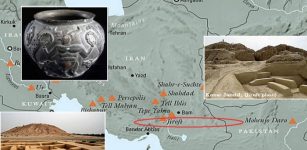 Jiroft’s Konar Sandal – Home To A Huge Ziggurat And Many Ancient Treasures
Featured Stories | Jun 8, 2021
Jiroft’s Konar Sandal – Home To A Huge Ziggurat And Many Ancient Treasures
Featured Stories | Jun 8, 2021 -
 Unusual Carved Stone Pillar With ‘Special Powers’ Discovered In Canada Confirmed Authentic Indigenous Artifact
Archaeology | Jan 29, 2021
Unusual Carved Stone Pillar With ‘Special Powers’ Discovered In Canada Confirmed Authentic Indigenous Artifact
Archaeology | Jan 29, 2021 -
 Berserkers In Mesopotamia, Europe And India: Old Tradition Of Mad Fighting Dates Back At Least 3000 BC
Ancient Traditions And Customs | Jun 6, 2017
Berserkers In Mesopotamia, Europe And India: Old Tradition Of Mad Fighting Dates Back At Least 3000 BC
Ancient Traditions And Customs | Jun 6, 2017 -
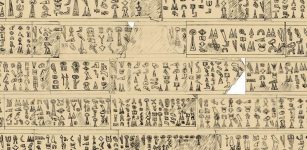 Invasion Of Mysterious Sea People – Enigmatic 3,200-Year-Old Luwian Hieroglyphic Inscription Sheds New Light On Ancient Puzzle
Archaeology | Oct 11, 2017
Invasion Of Mysterious Sea People – Enigmatic 3,200-Year-Old Luwian Hieroglyphic Inscription Sheds New Light On Ancient Puzzle
Archaeology | Oct 11, 2017 -
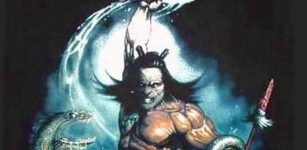 Tangaroa – Polynesian God Of Ocean And Fish In Constant Struggle With His Brother
Myths & Legends | Jun 2, 2020
Tangaroa – Polynesian God Of Ocean And Fish In Constant Struggle With His Brother
Myths & Legends | Jun 2, 2020 -
 Idiots Were Not Allowed To Vote In Ancient Athens
Ancient History Facts | May 30, 2016
Idiots Were Not Allowed To Vote In Ancient Athens
Ancient History Facts | May 30, 2016 -
 Mysterious Books From The Unknown And ‘Impossible’ Coincidences
Featured Stories | Dec 30, 2020
Mysterious Books From The Unknown And ‘Impossible’ Coincidences
Featured Stories | Dec 30, 2020 -
 Cursed Dwarf Fafnir Turned Into A Fearsome Norse Dragon And Guarded The Stolen Magical Ring Andvaranaut
Featured Stories | Aug 16, 2017
Cursed Dwarf Fafnir Turned Into A Fearsome Norse Dragon And Guarded The Stolen Magical Ring Andvaranaut
Featured Stories | Aug 16, 2017 -
 Mysterious Mount Roraima Surrounded By Myths And Clouds Of Dense Fog
Featured Stories | Nov 13, 2018
Mysterious Mount Roraima Surrounded By Myths And Clouds Of Dense Fog
Featured Stories | Nov 13, 2018 -
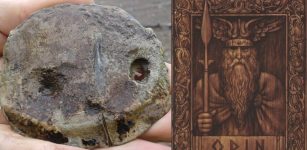 Unusual Object With Crosses And Enigmatic Runes Discovered In Sweden
Archaeology | May 16, 2018
Unusual Object With Crosses And Enigmatic Runes Discovered In Sweden
Archaeology | May 16, 2018 -
 On This Day In History: Greek Archaeologist Manolis Andronikos Who Discovered Tomb of Philip II of Macedon, Was Born – On Oct 23, 1919
News | Oct 23, 2016
On This Day In History: Greek Archaeologist Manolis Andronikos Who Discovered Tomb of Philip II of Macedon, Was Born – On Oct 23, 1919
News | Oct 23, 2016

